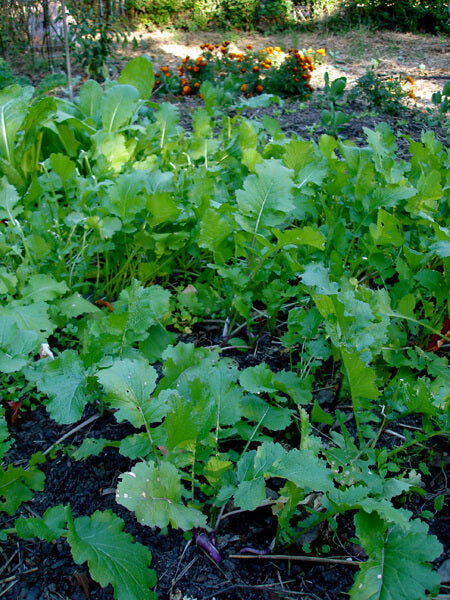Turnip greens are a delicious and nutritious leafy green vegetable that can be grown easily at home. While turnips are valued for their crisp, sweet roots, the leafy green tops are also edible and full of vitamins, minerals, and phytonutrients. For gardeners interested in maximizing turnip green growth and yield, using the right fertilizer is key.
An Overview of Turnip Greens
Turnip greens come from the same plant that produces turnip roots. They can be harvested continuously throughout the growing season. The greens have an earthy, slightly spicy taste that is perfect for salads, sautés, stir fries, and Southern-style dishes.
Turnip greens are an excellent source of vitamins A, C, K, folate, manganese, and calcium. They also contain glucosinolates, which studies have shown may have cancer-fighting properties.
Factors to Consider When Choosing a Fertilizer for Turnip Greens
When selecting a fertilizer to optimize turnip green growth, there are a few key factors to consider:
-
Nitrogen (N) – Turnip greens need plenty of nitrogen to drive leafy growth and keep the plants producing new leaves Look for fertilizers higher in nitrogen
-
Organic vs. Synthetic – Organic fertilizers release nutrients more slowly, reducing the risk of fertilizer burn. Synthetic fertilizers offer immediate nutrient availability.
-
Liquid vs Granular – Liquid fertilizers provide quick access to nutrients while granular options release nutrients over time Use both for a balanced feeding schedule.
-
Micronutrients – Turnip greens need boron, manganese, and molybdenum. Make sure the fertilizer contains these.
-
pH Adjusting – Turnips prefer a soil pH between 6.0-6.8. Some fertilizers can alter pH.
The 6 Best Fertilizers for Turnip Greens
1. Neptune’s Harvest Fish & Seaweed Fertilizer (2-3-1)
- Liquid organic fertilizer made from fish hydrolysate and seaweed
- Excellent source of nitrogen, iron, magnesium, and other micronutrients
- Fish hydrolysate provides fast nutrient uptake
- Can be applied as a foliar spray or soil drench
- Has an NPK ratio ideal for leafy growth
2. Dr. Earth Organic Vegetable Fertilizer (3-2-2)
- Dry organic fertilizer with slow, steady nutrient release
- Contains beneficial microbes for enhanced soil life
- Rich in nitrogen, phosphorus, potassium and micronutrients
- Made from natural, sustainable ingredients
- Can be mixed into soil or used as side dressing
3. Espoma Organic Vegetable & Herb Fertilizer (4-6-2)
- Granular organic fertilizer derived from feather meal, bone meal, greensand and potassium sulfate
- Timed nutrient release feeds plants for 6-8 weeks
- High phosphorous promotes root growth and plant maturity
- Contains calcium, sulfur, magnesium and micronutrients
- Can be incorporated before planting or side dressed after emergence
4. FoxFarm Big Bloom Liquid Plant Food (0.5-0.7-0.7)
- Concentrated liquid fertilizer delivers fast nutrient uptake
- Higher nitrogen and balanced NPK ratio
- Seaweed, earthworm castings, bat guano and fish emulsion provide micronutrients
- Can be foliar applied or added to irrigation
- Use every 2 weeks during growing season
5. Down To Earth All Purpose Fertilizer (5-5-5)
- Balanced NPK ratio provides steady feeding
- Made from natural, vegan ingredients like alfalfa meal and langbeinite
- Boron, copper, manganese, zinc and iron for optimal plant health
- Can be mixed into soil before planting or side dressed after emergence
- Use every 4-6 weeks for a continuous release of nutrients
6. Jobe’s Organics Vegetable & Tomato Granular Fertilizer (2-5-3)
- Slow-release granular fertilizer feeds plants up to 6 weeks
- Higher phosphorus promotes root and plant maturity
- Contains bone, feather, and blood meals plus beneficial microbes
- Low burn risk even when placed near roots and stems
- Incorporation before planting provides season-long nutrition
How Much and When to Apply Fertilizer for Turnip Greens
- Test soil and follow product instructions to determine rate
- Mix 2-4 tablespoons of granular fertilizer per square foot into beds before planting
- Side dress growing plants with 1-2 tablespoons per square foot every 4-6 weeks
- For containers, use 1-2 teaspoons per gallon of soil and feed every 2-3 weeks
- Liquid feeds are diluted then applied every 1-2 weeks according to label
- Foliar spray liquid fertilizer for immediate nutrient boost anytime during growth
The Bottom Line
Choosing a quality fertilizer with ample nitrogen and micronutrients is the key to growing productive turnip greens. Look for organic options like fish emulsion, granular chicken manure compost, or all-purpose vegetable fertilizers. Apply at planting, side dress regularly, and supplement with foliar sprays during the season for best results. With the right fertilizer, you’ll be harvesting basketfuls of healthy turnip greens from your garden.

Can I tuck some turnip greens along the edge of a flower bed?
The only thing to remember is that you want to be able to reach all the way around each plant to allow for easy picking. Try to leave at least 6 to 12 inches between turnips and surrounding plantings.
Soil, Planting, and Care
Turnip greens are easy to grow in any well-drained soil. Set out turnip green plants 2 to 4 weeks before the last frost in spring and from late August to October for a fall crop in most areas. In zones 9 and 10 they can be planted throughout fall and winter.
Like collards, kale, and other greens, turnip greens need to grow fast to produce nice, tender leaves. They arent too fussy about soil, growing well in a soil pH of 5.5 to 6.8, and doing okay even in poor sandy soil. Ideally, though, you should enrich the ground with compost or aged compost-enriched Miracle-Gro® Performance Organics®All Purpose In-Ground Soil before setting out plants to improve soil texture and nutrition.
Set plants 6 inches apart, and do not try to thin or separate seedlings if there are several in the container. Turnip greens dont mind growing in small clumps as long as each little group has ample elbow room. Although they are a variety that will make turnips, dont expect great roots from crowded plants. They are sown with just the leaves in mind.
Turnip greens need steady water in order to thrive, so Miracle-Gro® Performance Organics® Edibles Plant Nutrition. This plant food works in harmony with In-Ground Soil to provide just the right nutrition to fuel more growth as you harvest leaves.
It is natural for older turnip leaves to turn yellow and wither. Removing older leaves every week or so encourages the plants to grow more greens.
Watch greens for occasional aphids or mites, which can be controlled with insecticidal soap spray. Small flower beetles or other chewing insects will sometimes make harmless holes in the leaves, but aphids and mites can ruin your harvest.
The ideal time to begin eating turnip greens is when nighttime temperatures are in the 40s or cooler to bring out the sweetness in the greens. Greens that grow in hot weather can taste strong and bitter, especially to people who havent honed a taste for them. Turnip greens are a little more pungent than collards. You can pick leaves one at a time, or use a sharp knife to gather big handfuls. Plants that are cut back about 2 inches above the top of the root will grow a new set of tender leaves in only 2 to 3 weeks.
Be sure to wash greens thoroughly to remove any soil. The easiest way is to put the leaves in a very large bowl or clean bucket of water and swirl it around so that any soil falls to the bottom. Repeat until the leaves are clean. If you grow a bumper crop, keep a big galvanized tub expressly for this purpose. It is best to cut greens just before you cook them, but they will keep in a plastic bag in the fridge for a few days. Extras can be steamed and frozen. Any sizable turnip roots that form can be cooked along with the greens.



Best Fertilizer For Mustard Greens | Abundance Growth in Few Days
FAQ
What fertilizer is best for turnips?
This vegetable is a heavy user of nitrogen. You should use a 30-10-10 fertilizer according to package directions.
What is the secret to growing turnips?
Turnips like a sunny spot and grow best in cool conditions, in fertile, moisture-retentive soil.
What does baking soda do to turnip greens?
… of an alkaline (ie baking soda) will give you a more vibrant green, but it also has the side effect of altering the texture of your greens to a mushier oneMar 15, 2014
Is Miracle-Gro good for turnip greens?
Turnip greens need steady water in order to thrive, so Miracle-Gro® Performance Organics® Edibles Plant Nutrition. This plant food works in harmony with In-Ground Soil to provide just the right nutrition to fuel more growth as you harvest leaves.
How do you fertilize turnip greens?
But for growing turnip greens, there are fewer fertilizers as easily accessible as Miracle-Gro. How to apply: Before planting, evenly apply approximately 1/2 cup granular fertilizer per 10 sq ft of growing space (or per 10-ft row of turnips), mix into the top 1-3 inches of soil, and water well.
How do you grow turnip greens?
GREENS Turnip greens grown for processing, Collards, Kale and Mustard Greens Apply and incorporate Trifluralin 4EC prior to planting at I pint per acre on coarse soils and 1.5 pints on medium and fine soils.
Which fertilizer is best for turnips?
Jobe’s is another trusted brand, with a variety of spikes and granular fertilizers, and organic and non-organic blends. For turnips, it’s better to use their granular organic vegetable and tomato fertilizer. Jobe’s fertilizer spikes are preferred for feeding larger single plants, like tomatoes and peppers.
